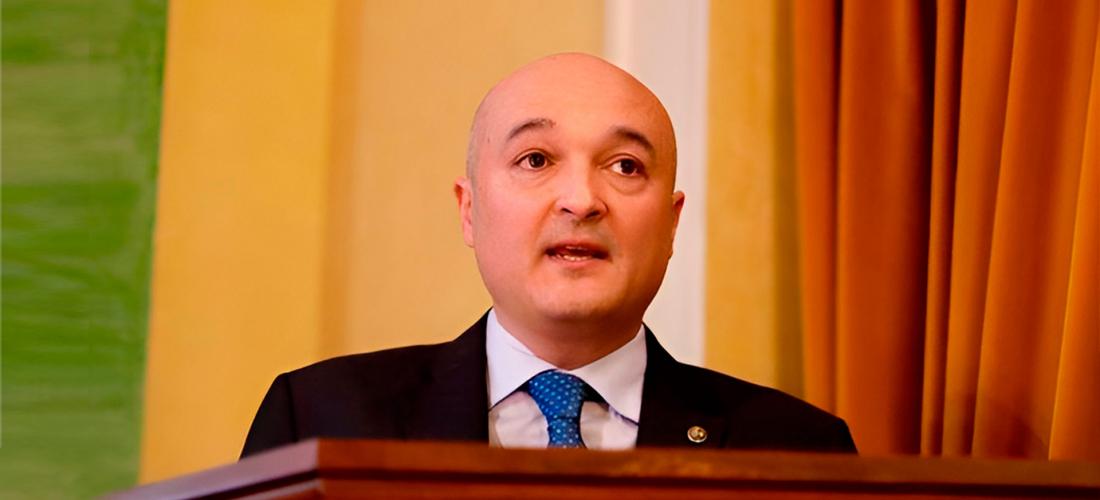In Memoriam Emilio Gómez González
We want to echo the emotional publication "In Memoriam Emilio Gómez González" written by his colleagues Consuelo Bellver-Cebreros (University Professor, Department of Applied Physics III) and Marcelo Rodríguez-Danta (University Professor, retired) in the specialized Spanish magazine in optics and photonics Pure and Applied Optics .
We miss you Emilio.
Pure and Applied Optics: In Memoriam Emilio Gómez González
"The unexpected and premature death on January 21, of Professor D. Emilio Gómez González has plunged the academic community of the Higher Technical School of Engineering (ETSi) of the University of Seville , where he was a professor since 2016. He successfully combined research and teaching, which is attested, on the one hand, by his extensive curriculum vitae (leading dozens of projects, research contracts and training new researchers), and by his deep humanity and personal sensitivity, recognized and appreciated. for all of us who had the opportunity and privilege of knowing him and at some stage of his training, collaborating with him.
Born into a Seville family of teachers in the disciplines of Art and Humanities, Emilio studied a degree in Physical Sciences at the University of Seville (1991). He carries out one-term predoctoral stays at Northwestern University in Chicago and at the Max Planck Institute for Quantum Optics in Munich.
Obtained the title of Doctor (1996) within the Applied Physics Program and with a teaching contract in force at the ETSi , a short period of time followed until the year 2000, the year in which he obtained a position as Full Professor, with frequent changes in his line of research: fluid mechanics, sports physics, medical diagnoses, etc. In 2001 he founded and directed the “Interdisciplinary Physics Research Group” (GFI) , whose lines of research focus on applications of Physics, in general, and Optics and Photonics, in particular, combined with Intelligence. Artificial, in various medical areas (Neurosciences, Neurophotonics, Ophthalmology, etc.).
It seems proven that great painting geniuses, Velázquez among them, used, to a greater or lesser extent, optical instruments of their time, predecessors of current photographic equipment, in order to obtain flat projections of images reflected by a mirror or refracted. by a lens. It is therefore understandable that, since his childhood, Emilio lived surrounded by high-quality photographic cameras, essential in the profession of his father, Prof. Gómez Piñol, Professor of Art History at the University of Seville.
This passion for images and their processing was a constant in his academic career and part of this knowledge is collected in his book “Guide to knowing digital photography cameras” and his photographs selected for exhibitions (FOTCIENCIA de FECYT and CSIC, 2017) or awarded in international scientific photography contests (“Honorable Mention” of the “Photo Contest 2017”, of the “Optical Society of America”).
He was also a researcher in the Applied Neuroscience Group of the Institute of Biomedicine of Seville (IBIS) and collaborated with different public and private institutions such as the “Virgen del Rocío” and “Virgen Macarena” university hospitals in Seville , the TEDAX-NRBQ Group of the National Police Corps , the “Calar Alto Observatory” Astronomical Center of Almería , the Astrophysical Institute of Andalusia (IAA)-CSIC of Granada, the Andalusian Network for the Design and Translation of Advanced Therapies, the HUMAINT project of the “Joint Research Centre” of the European Commission, etc. He contributed and applied innovative and pioneering technologies, at a national and international level, both in surgical interventions and in the design of non-invasive diagnostic equipment, in Neurosurgery, Fetal Surgery and other medical specialties. We will highlight the designs of: portable intelligent operating room (QIP); surgical helmet microscope; FibroTC and DEMILI systems, as well as various computer programs and other systems to help diagnose serious diseases (liver pathologies, multiple sclerosis, etc.)
In short, he worked a lot and in many fields; Suffice it to mention a few: “ Neurosciences and Intraoperative Neurophotonics” (“Epilepsy” Project), “Computer-assisted diagnosis in hepatology and neurology” (LITMUS and BOC Projects), “Biomechanics and hydrodynamics of hydrocephalus and related pathologies” (FUSCLEAN Project), “Artificial Intelligence in Medicine and Health. Technologies and social impact” (HUMAINT Project) and the recent “Optical techniques for detecting the SARS-CoV-2 and COVID-19 virus” (C-CLEAN Project), in which he led a multidisciplinary team of eleven Spanish institutions, with the support of the European Commission.
This enormous research work is supported by numerous patents, publications in indexed journals (especially in the field of health sciences) and a high number of communications at conferences. Evaluating, with a certain scientific rigor, the research work carried out by Emilio, in the fields of health, exceeds our personal competences, which is why we refer, for its honor and merit, to the Royal Academy of Medicine and Surgery of Seville which, in 2018, for “his research, studies and publications”, elected him Active Corresponding Academic . In 2019 he was also named Honorary Academician of the Charlemagne Scientific Institution of Malaga .
He received numerous awards and decorations, among which we highlight the most recent: Police Merit Cross with White Badge (2020) for his scientific collaboration with the Ministry of the Interior in the aforementioned C-CLEAN project. Emilio has left; There is only one consolation: “A life well spent is a long life . Many achievements remain behind him in the field of applied sciences, but he has also left behind a large group of collaborators and disciples who, with certainty, will continue and expand the technologies he initiated. But, above all, Emilio leaves us an example of fortitude and the indelible memory of his great quality as a person. May he rest in peace."
C. Bellver-Cebreros (University Professor, Department of Applied Physics III)
M. Rodríguez-Danta (University Professor, retired)
